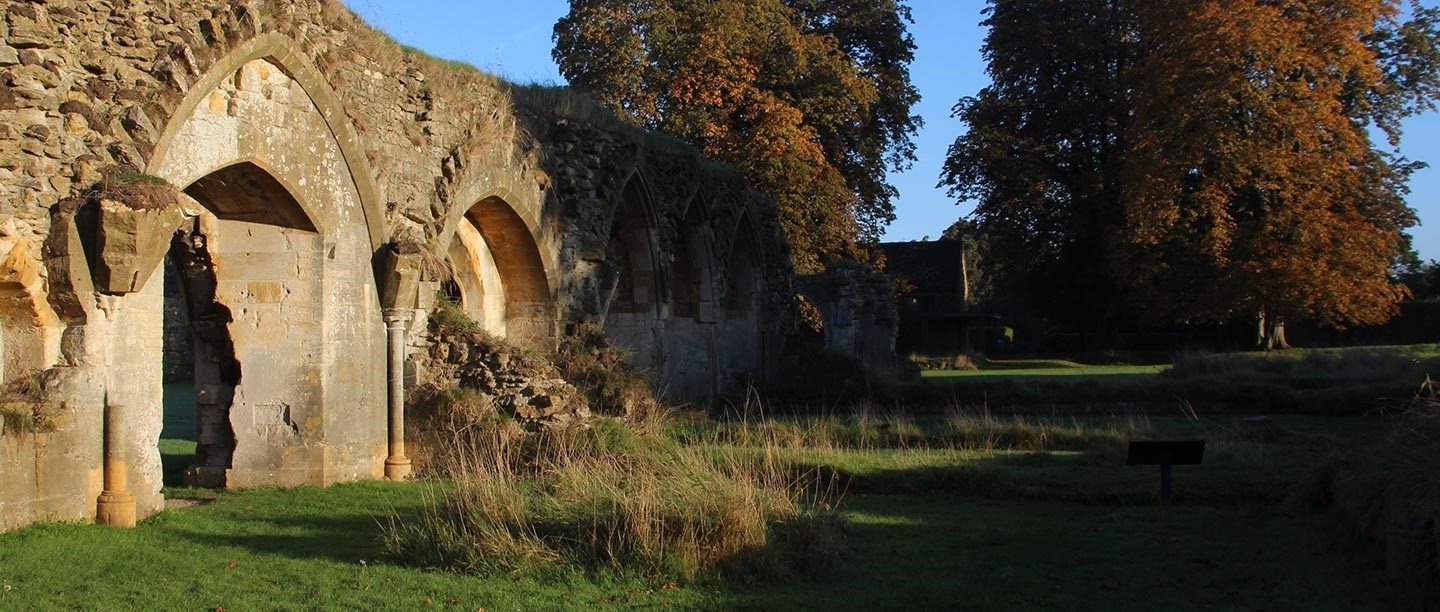The Foundation of Hailes Abbey
In 1242, Richard, Earl of Cornwall (1209–72), second son of King John, vowed to found a monastery to give thanks to God after surviving a storm at sea. He was able to fulfil this vow three years later when his brother Henry III granted Richard the manor of Hailes.
Richard decided that his new monastery should belong to the Cistercian order, apparently inspired by a visit to Royaumont Abbey near Paris. The founding colony of monks came from his father’s foundation at Beaulieu Abbey in Hampshire. Under the leadership of Prior Jordan, 20 monks and 10 lay brothers departed for Hailes on 15 June 1246. Lay brothers were a new category of monk introduced by the Cistercians. They were uneducated and undertook much of the manual labour, wearing simple work clothes in contrast to the white habits worn by the monks.
Richard was generous to his monastery, spending as much as 10,000 marks (over £6,600) on its construction. This proceeded at breakneck speed and the church was consecrated amid great ceremony in November 1251.
From the outset Hailes functioned as the burial church for Earl Richard’s family. The Cistercian order was regarded as ‘the surest road to heaven’ and burial within one of the order’s churches was believed to assist the passage of the soul through the pains of purgatory to eternal rest in heaven. In addition to Earl Richard himself, three of his sons and his second wife, Sanchia of Provence, were all buried at Hailes.
Holy Blood of Hailes
In 1270 Richard’s son Edmund presented the monks with what was believed to be a portion of the blood shed by Christ on the Cross. The east end of the church was rebuilt to house this holiest of all relics. The work was completed in 1277 and the relic placed on a platform behind the high altar. The Holy Blood of Hailes turned the abbey into one of the most important pilgrimage destinations in medieval England.
Read more about the Holy Blood of HailesFinancial Trouble and Plague
In 1300 Earl Edmund died without an heir, depriving the abbey of its royal benefactor. The abbey soon found itself with financial problems. The monks complained to the Bishop of Worcester in 1325 that the buildings of the abbey were incomplete and that they were struggling to provide hospitality to guests, an obligation of all monasteries.
In 1348–9 the Black Death swept across England. The mortality caused by the pestilence is referred to in the abbey’s chronicle, which records ‘there was a great plague on the earth so that of every three men scarcely one remained.’ A recurrence of the plague in 1361–2 is said to have killed a great many monks and lay brothers at Hailes.
Ruin and Renovation
The abbey’s problems continued into the 15th century. On 16 December 1402, thieves broke into the church and stole riches worth 1,000 marks (over £660) from the shrine of the Holy Blood. The abbey was also being poorly administered. In 1397, Henry Alcestre was elected as abbot but seems to have been rapidly deposed. In 1412 he was blamed for letting the buildings of the abbey fall to ruin and running up debts of over £600. The income of the abbey had been reduced to just £100 per year, insufficient to support the 22 monks.
In view of the abbey’s difficulties, the anti-pope John XXIII (whose claim to the papacy was recognised by the English crown) gave special spiritual privilege to pilgrims who visited Hailes and made gifts to the abbey.
Further privileges were obtained in 1431 when pilgrims visiting the Holy Blood and contributing to the upkeep of the church were granted generous remission from penances. Indulgences benefiting pilgrims to the monastery were also issued by Pope Callistus III in 1458 and a decade later by Pope Paul II. These explicitly state that the gifts from pilgrims were to fund building work at the abbey, including the repair of the church and its bell tower.
Work also started on the renovation of the cloister, and the former accommodation of the lay brothers (who had ceased to be part of the community in the 14th century) was converted into a house for the abbot. Complete with halls, chambers and a private chapel, it projected the religious and secular importance of the abbots of Hailes, who were important patrons in their own right.
The Final Flowering
The early 16th century was a period of prosperity for the abbey. Successive abbots continued to invest in its art and architecture and individuals at the very top of Tudor society were admitted to the abbey’s confraternity, or brotherhood, including Charles Brandon, 1st Duke of Suffolk. The abbey also benefited from the patronage of local gentry, including Sir John Huddleston (d. 1511/12) and his wife, Dame Joan (d. 1518/19), who made generous bequests to the monastery. Their sculpted coat of arms decorated the abbey’s buildings.
The Fall of Hailes Abbey
The last abbot of Hailes – Stephen Sagar – was elected in 1527. Sagar cannot have foreseen that within ten years the shrine of the Holy Blood would be dismantled and the monastery itself reduced to ruins.
In the early 1530s Henry VIII sought to reform what he viewed as the abuses of the Catholic Church. Attacks were launched on the cult of saints and the veneration of relics and Hailes Abbey was soon in the sights of the reformers. By 1538 the relic had been denounced as a fake and the shrine destroyed.
The following year Hailes fell victim to Henry VIII’s Suppression of the Monasteries, which resulted in the closure of 840 religious houses across England and Wales. The end for Hailes came on Christmas Eve 1539 when Abbot Sagar and the community of 21 monks signed the surrender deed.
The abbey’s gold and silver plates were removed to the Tower of London. The lead was stripped from the roofs and melted into 119 large bars called fothers. The site was also thoroughly pillaged by locals, eager to profit from the fall of the monastery. The buildings were sold to Robert Acton, a dealer in monastic property. The church and many of the other buildings were deemed superfluous and rapidly demolished, but the former abbot’s house in the west range and several agricultural buildings were retained and converted into a country estate.
Hailes as a Country House
Between 1607 and 1686, Hailes was the residence of the Tracy family of Toddington, whose family had an association with Hailes dating back to the Middle Ages. The house was visited by the travel writer Celia Fiennes (1662–1741) who described it in her diary as
a good old house and there is a pretty Chappel with a gallery for people of quality to sit in, which goes out of the hall, that is a lofty hall.
By the early 18th century, the Tracys had left Hailes for their house at Toddington and their residence at Hailes fell into ruins.
The Rediscovery of Hailes
By the mid-19th century, the abbey’s romantic decay was attracting tourists. One guide described the ruins as being ‘concealed in a wimple of nature’s manufacture’.
Excavations were conducted between 1899 and 1908 under the direction of William Bazeley, a canon of Gloucester Cathedral, and Welbore St Clair Baddeley, poet, dramatist and author of A Cotteswold Shrine (1908). Sir Harold Brakspear, an expert on Cistercian architecture, provided advice on the excavations and repairs and published articles in learned journals.
Following these investigations the site once again fell into disrepair. In 1927 the abbey was visited by Sir James K Fowler (1852–1934), an eminent physician and warden of Beaulieu Abbey. He was appalled by the condition of the ruins at Hailes. Using money raised by a public appeal he devised a strategy for the presentation of the site, including the construction of the museum which remains in use to this day. Fowler also encouraged visitors, persuading the Great Western Railway to open a halt on the line that runs close to the monastery.
In 1937 the site was donated to the National Trust and in 1948 the Ministry of Works – a predecessor of English Heritage – assumed responsibility for the care and interpretation of the abbey.
Read more
-
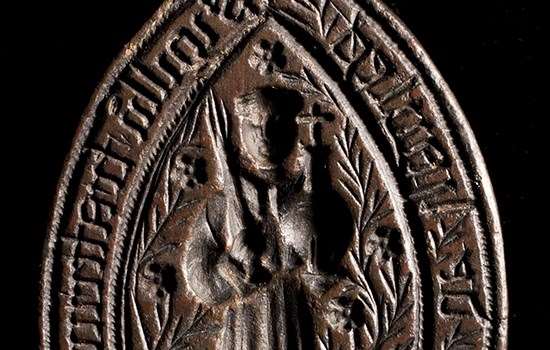
The Holy Blood of Hailes
The fortunes of Hailes Abbey were transformed by the arrival of a holy relic. Learn how the Holy Blood of Hailes contributed to both the rise and fall of the monastery.
-
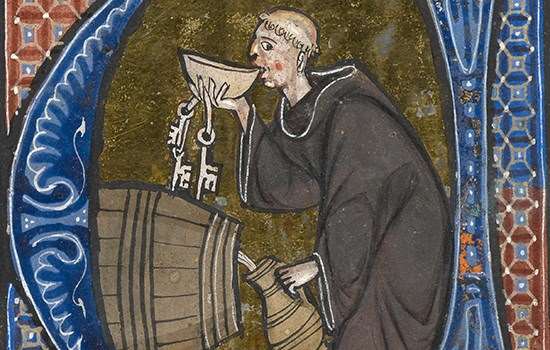
Misbehaving monks of Hailes Abbey
From visiting taverns to singing at the wrong pitch, the monks of Hailes Abbey couldn’t always meet the high standards expected of them.
-
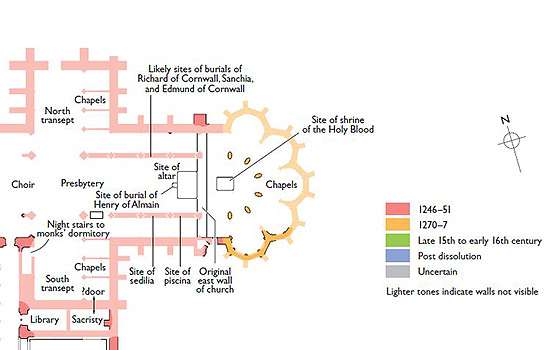
Download a plan
Download this PDF plan to discover how the buildings of Hailes Abbey developed over time.
-
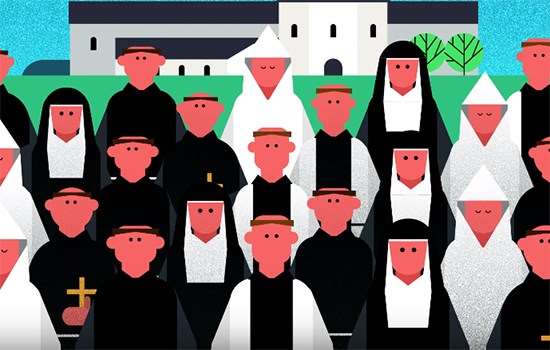
A mini guide to Medieval Monks
Do you know the difference between the Benedictines, Cluniacs, Carthusians and Cistercians? This short animation will guide you through the different religious communities in medieval Britain.
